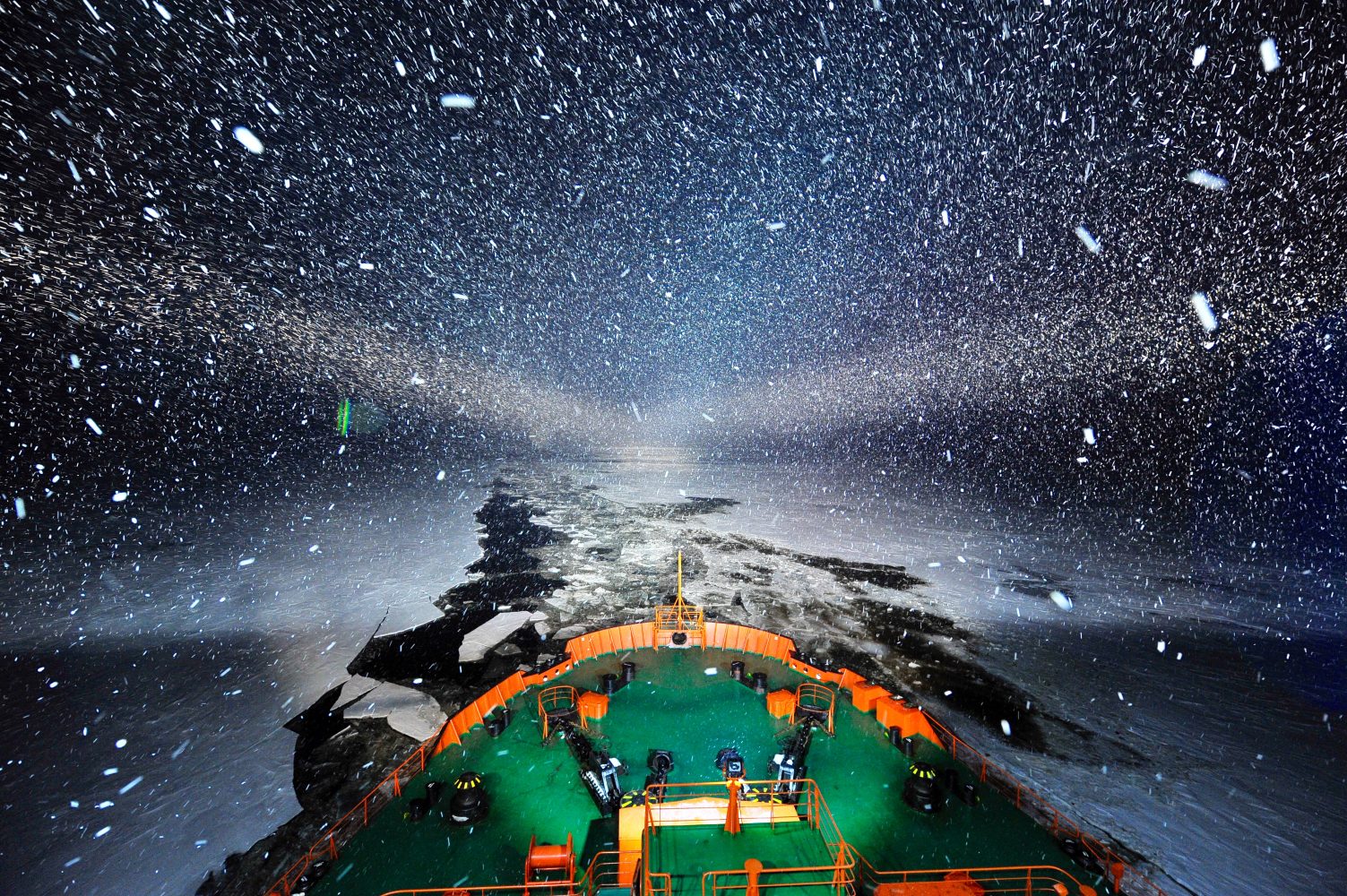
Arctic Calling
back to contentsThe Arctic Forum brought together over 3,000 researchers, experts, government officials and representatives of international businesses and organizations. The event was also attended by Russian President Vladimir Putin and leaders of Nordic countries.
The Arctic currently accounts for more than 10% of total investments made by the Russian Government, Putin said at the plenary session. And this share will definitely grow. For the Arctic to become an attractive investment destination there must be a well-developed infrastructure, particularly the Northern Sea Route (NSR), which is the shortest way between Northern Europe and the Far East. It is a viable alternative to the Suez Canal: the traveling distance from Murmansk (Russia) to Yokohama (Japan) via the Suez Canal is 12,500 nautical miles while the same trip through the NSR is just 5,770 miles.
In December 2018, Rosatom has been appointed as an operator of the NSR infrastructure. Speaking at the Arctic Forum, Rosatom’s Director General Alexey Likhachev announced plans to increase freight traffic on the Northern Sea Route to 92.6 million tons by 2024. These plans are even more ambitious than 80 million tons’ target set by the Russian president.
“Our goal is to increase traffic considerably. Last year’s cargo traffic on the Northern Sea Route reached 20 million tons. It is three times higher than the Soviet-time record of 1987,” Putin said.
According to Alexey Likhachev, the plan for 2024 is to transport 41 million tons of gas (liquefied natural gas and gas condensate), 23 million tons of coal, 17.1 million tons of oil, 8 million tons of railway cargo, and 3.5 million tons of other cargo, making a total of 92.6 million tons.

Ðîññèÿ. Ñàíêò-Ïåòåðáóðã. Çàìåñòèòåëü ïðåäñåäàòåëÿ ïðàâèòåëüñòâà ÐÔ – ïîëíîìî÷íûé ïðåäñòàâèòåëü ïðåçèäåíòà ÐÔ â Äàëüíåâîñòî÷íîì ôåäåðàëüíîì îêðóãå Þðèé Òðóòíåâ, âðåìåííî èñïîëíÿþùèé îáÿçàííîñòè ãóáåðíàòîðà Ñàíêò-Ïåòåðáóðãà Àëåêñàíäð Áåãëîâ (ñëåâà íàïðàâî) âî âðåìÿ îñìîòðà âûñòàâêè V Ìåæäóíàðîäíîãî àðêòè÷åñêîãî ôîðóìà “Àðêòèêà – òåððèòîðèÿ äèàëîãà” â êîíãðåññíî-âûñòàâî÷íîì öåíòðå “Ýêñïîôîðóì”. Àëåêñàíäð Ðþìèí/ôîòîõîñò-àãåíòñòâî ÒÀÑÑ
“This is not our fantasy, but carefully calculated figures. Much needs to be done to make the dream come true. Rosatom has a lot to do in organizing sea traffic and constructing new icebreakers while transportation companies and agencies are expected to provide infrastructure and port facilities for cargo handling. If oil and gas producers do not see that we are ready to transport hydrocarbons they extract, they will not develop oil and gas deposits as fast as they can. In this situation Rosatom is an embodiment of government guarantees for hydrocarbon producers, who make huge investments in Arctic projects,” Rosatom’s Director General said, adding that he expected the annual freight traffic on the Northern Sea Route to reach 110–120 million tons by the 2030s.
Alexey Likhachev also told the audience about the structure of the newly established NSR Directorate, “Rosatom and the Russian Ministry of Transport have completed the process of dividing the management powers in respect of the Northern Sea Route. Port facilities and the ministry’s Hydrographic Survey Department were transferred to Rosatom. The Ministry of Transport is now responsible for regulatory aspects, while Rosatom will deal with commercial matters as an organization responsible for the Northern Sea Route federal project. Development of the Arctic regions and hydrocarbon deposits is the function of the Ministry for Development of the Russian Far East and Arctic.”
Rosatom will set up a center of naval operations to coordinate sea traffic and develop regulations to harmonize activities of different government agencies operating on the Northern Sea Route.
According to Alexey Likhachev, investments in the NSR development project are estimated at RUB 735 billion (USD 11.5 billion) until 2024. The government will fund RUB 274 billion (USD 4.3 billion) of the project costs, with the rest to be covered by Rosatom and hydrocarbon producers, including Novatek, Rosneft and others.
Russia will have at least nine nuclear icebreakers by 2035. For the time being, Atomflot (a Rosatom Group operator of the nuclear fleet) has four icebreakers and a lighter. The service life of their nuclear propulsion units can be extended at least until 2025. By that time, Atomflot will receive three new powerful icebreakers – Arktika, Sibir and Ural (launched on May, 25) – capable of traveling in both deep-sea waters and river estuaries. There can be more new ice-going ships as the decision has been made to start construction of the fourth and fifth icebreakers. The construction is planned to be financed by both the government and commercial loans.
Year-round navigation in the Arctic will be guaranteed when the first icebreaker of the Leader series is put afloat and commissioned. Such icebreakers will be two times more powerful than those now under construction and capable of breaking 4-meter thick ice. Atomflot is expecting an approval from the Zvezda Shipyard. The plan is to build a total of three icebreakers of the Leader series. “These vessels will be used primarily on the eastern section of the Northern Sea Route to transport cargo to China, Japan and South Korea,” Alexey Likhachev said. The first Leader icebreaker is expected to be commissioned in 2026–2027.
Development of the Arctic will require new energy capacity. This is where Rosatom sees good prospects for using small and medium nuclear power plants. In the summer of 2019, floating nuclear power unit Akademik Lomonosov will be transported to the Russia’s northernmost port of Pevek. It will become a showcase technology that can be rolled out at other sites. Besides, Rosatom plans to develop other types of low capacity power plants, such as a two-unit plant with two 50 MW RITM-200 reactors, that can be constructed either as floating or on-shore facilities.




